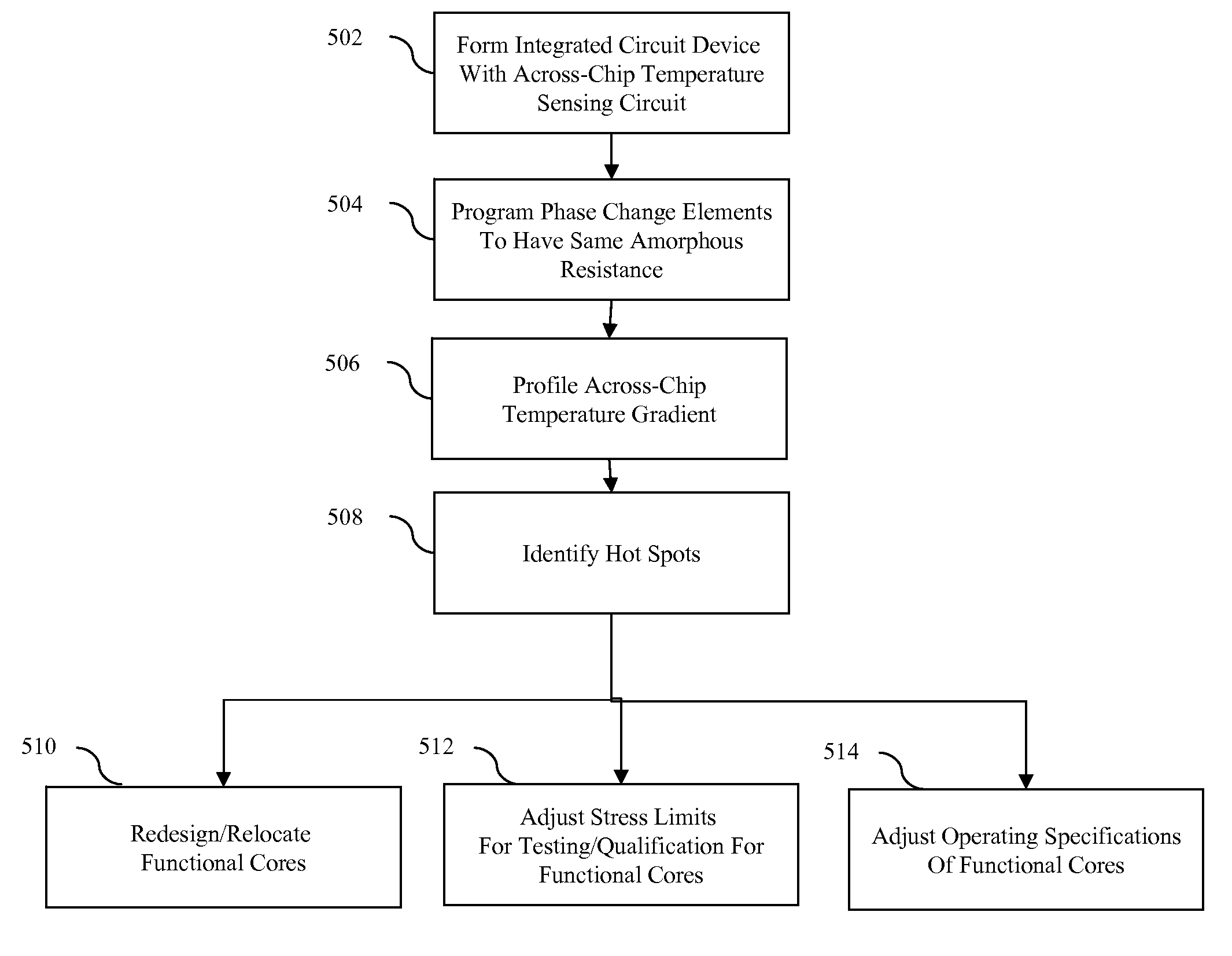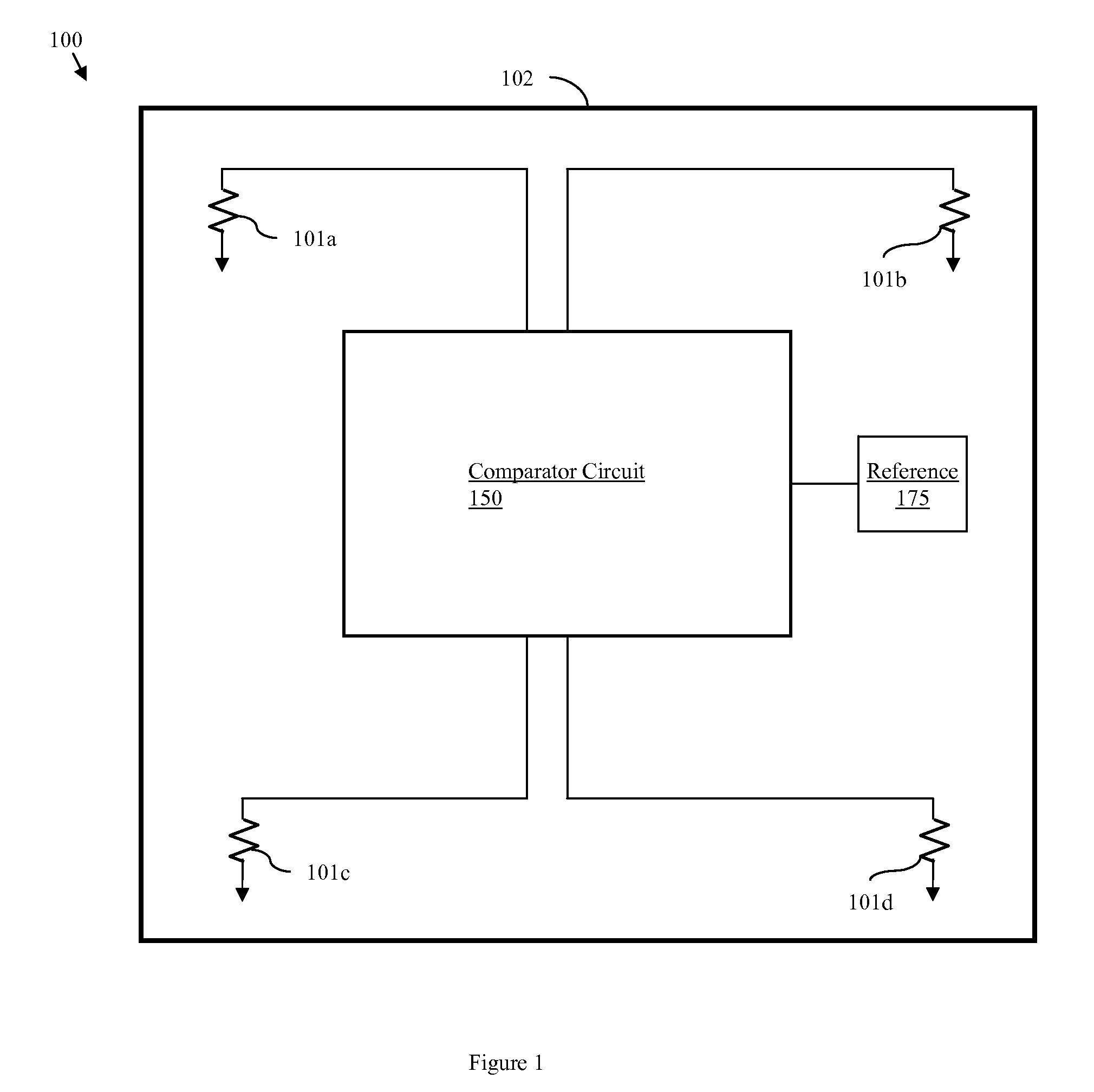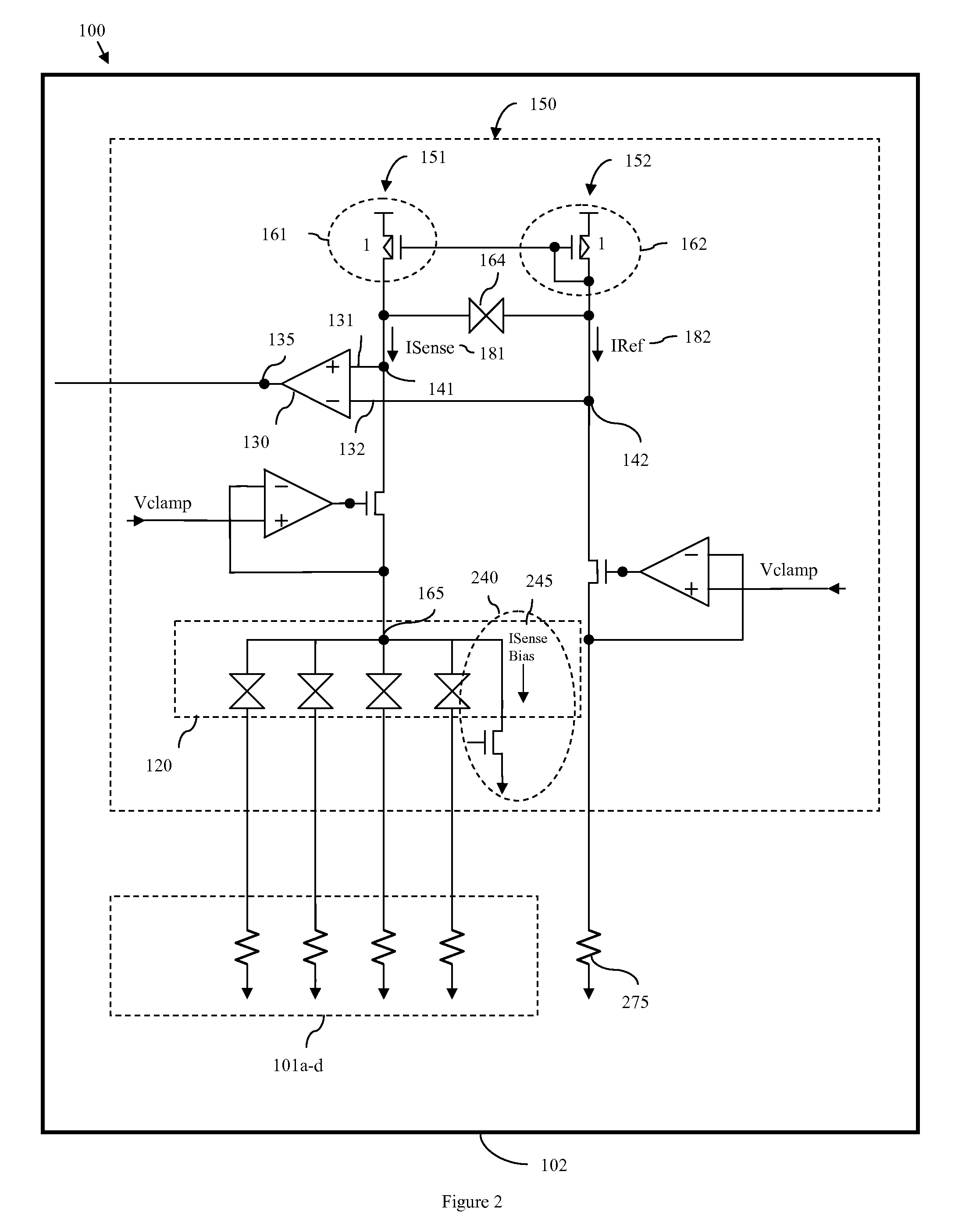Circuit And Method Using Distributed Phase Change Elements For Across-Chip Temperature Profiling
- Summary
- Abstract
- Description
- Claims
- Application Information
AI Technical Summary
Benefits of technology
Problems solved by technology
Method used
Image
Examples
Embodiment Construction
[0024]The embodiments of the invention and the various features and advantageous details thereof are explained more fully with reference to the non-limiting embodiments that are illustrated in the accompanying drawings and detailed in the following description.
[0025]As mentioned above, operational performance of integrated circuit devices can be significantly affected by temperature variations, due to temperature-dependent characteristics, such as charge carrier mobility, threshold voltage, resistance, etc. Consequently, the temperature gradient across a semiconductor chip can be profiled to set up the needed stress levels for testing and qualification of system-on-chip (SOC) functional cores (e.g., third party intellectual property (IP) cores, logic cores, memory cores, processor cores, etc.) and further to set operational specifications (e.g., operating voltages) for SOC functional cores.
[0026]On-chip temperature sensors are useful tools for profiling temperature gradients. Howeve...
PUM
 Login to View More
Login to View More Abstract
Description
Claims
Application Information
 Login to View More
Login to View More - R&D
- Intellectual Property
- Life Sciences
- Materials
- Tech Scout
- Unparalleled Data Quality
- Higher Quality Content
- 60% Fewer Hallucinations
Browse by: Latest US Patents, China's latest patents, Technical Efficacy Thesaurus, Application Domain, Technology Topic, Popular Technical Reports.
© 2025 PatSnap. All rights reserved.Legal|Privacy policy|Modern Slavery Act Transparency Statement|Sitemap|About US| Contact US: help@patsnap.com



